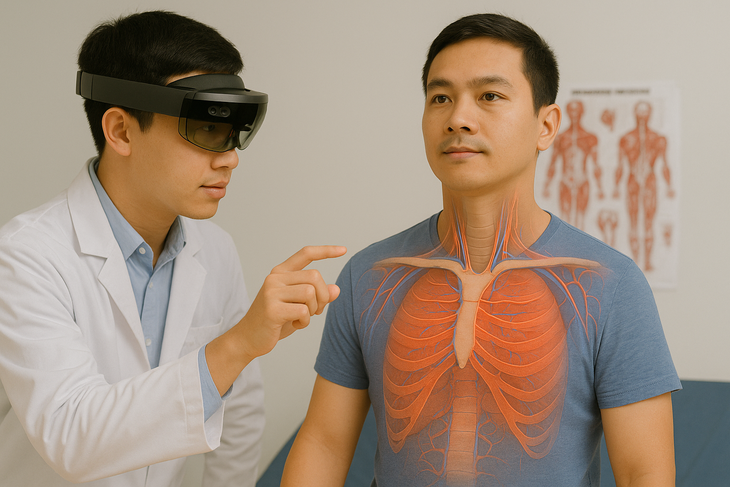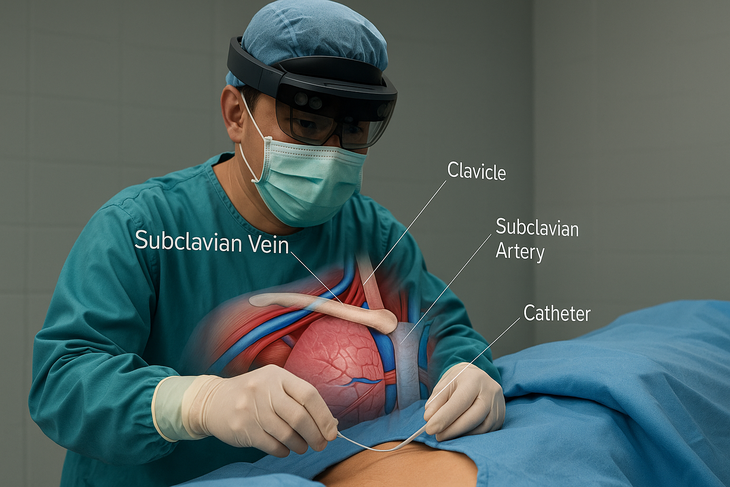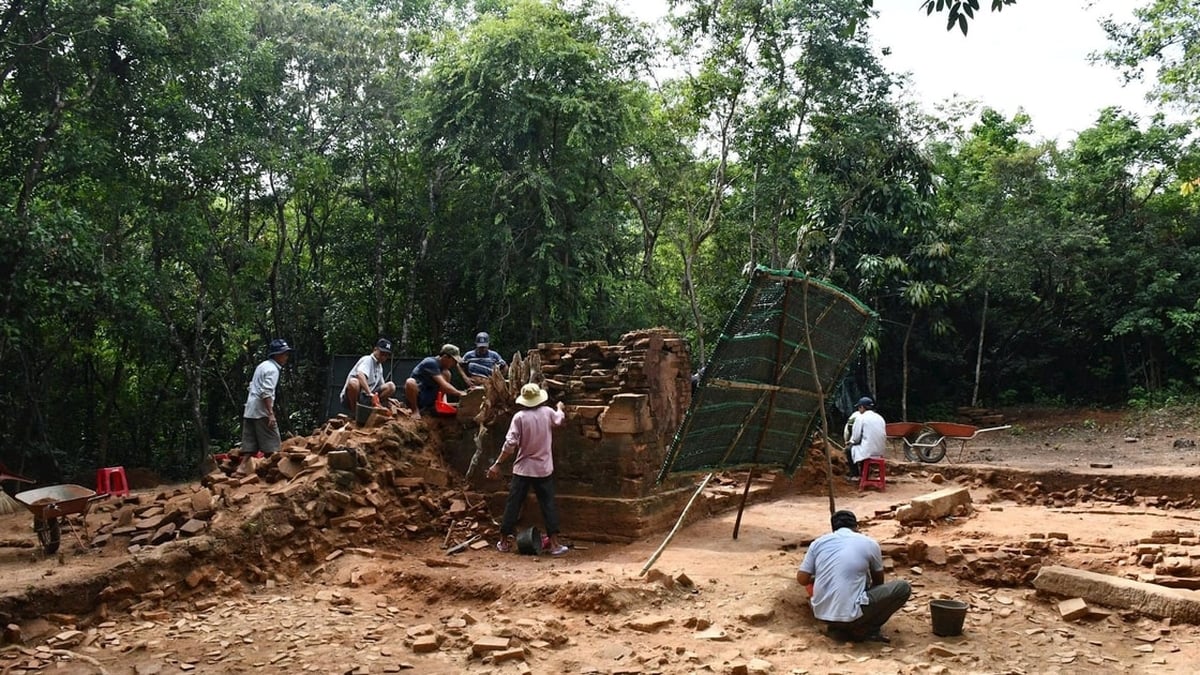
VR/AR technology helps simulate the patient's body in reality, allowing doctors to plan surgery more accurately, while helping medical students learn anatomy more intuitively.
VR (Virtual Reality) and AR (Augmented Reality) are technologies that simulate, display visual information and virtual interactions. In the medical field, they are applied for many purposes.
VR helps create a 3D environment for doctors or medical students to practice surgery, virtual surgery, and technical operations without using real patients; simulate treatment procedures to train medical teams; support patients to reduce pain and anxiety (for example, wearing VR glasses to relax during treatment).
Meanwhile, AR displays medical information and images (such as CT and MRI images) overlaid on the real body, helping doctors determine the exact location of tissues, organs, and blood vessels during surgery; supports remote guidance (experts can "see" through the camera and directly instruct other doctors when intervening in remote places); trains medical students by letting them see anatomical structures projected directly onto the real human body.
These technologies are opening up unprecedented opportunities in the healthcare industry, from treatment to training.
"Revolution" in medicine
Through devices such as augmented reality glasses (e.g. Microsoft HoloLens), images from CT, MRI or PET scans are built into 3D models and then superimposed onto the patient's body in real time.
VR/AR technology allows doctors to see images of tumors, blood vessels, nerves or internal organs without having to open surgery, thereby making treatment decisions faster, more accurate and less invasive. The interesting thing is that advanced software will calculate and calibrate the 3D image to always match the patient's position even when the patient moves or changes position.
In addition, marker tracking technology helps the virtual image adhere completely to the real body, avoiding errors in procedures that require high precision.
With the technology of displaying anatomy directly on the skin, the surgeon can plan a safe surgical path, avoiding important structures such as large blood vessels or nerves. This application is especially useful in neurosurgery, orthopedic surgery, cardiovascular intervention or tumor biopsy.
In addition, VR/AR technology also strongly supports minimally invasive procedures such as drainage tube placement, percutaneous biopsy, and catheter placement - procedures that potentially pose a risk of damaging nearby structures if the doctor cannot clearly see the internal structure.

The doctor performing the minor surgery is marked and displayed through augmented reality glasses.
Not only supporting doctors, VR/AR anatomy simulation is also a revolution in medical training. Medical students can learn anatomy on real people, observe the layers of muscles, bones, and blood vessels displayed vividly and intuitively, gradually replacing traditional plastic models or donated bodies.
A report in the US shows that using AR glasses helps students remember anatomical positions and relationships up to 35% better than traditional learning methods, thanks to the ability to interact and experience 3D space.
The race of the technology "giants"
This market has attracted many names in the technology industry. Microsoft developed HoloLens combined with HoloAnatomy software to serve surgery and medical teaching.
Medivis (USA) launched SurgicalAR to help neurosurgeons navigate more accurately. EchoPixel also made its mark with a real-time 3D visualization system for internal organs.
Magic Leap, which is famous in the VR/AR industry, is also collaborating with hospitals to develop MRI/CT images projected directly onto patients, opening up the prospect of "magic eyes" for doctors right on the operating table...
However, this technology cannot be widely popularized due to the high cost of equipment and software, along with the requirement of skilled human resources training. In addition, the problem of synchronization between virtual images and real patient movements still needs to be further improved to achieve absolute accuracy because in medicine, a deviation of just a few millimeters can cause serious consequences.
However, with the strong development of augmented reality and artificial intelligence, it is not an exaggeration to say that the future of medicine will have a "third eye" that helps doctors not only see, but also touch the vivid data of the patient's body, right on the hospital bed.
Source: https://tuoitre.vn/cong-nghe-vr-ar-giup-bac-si-nhin-xuyen-thau-nguoi-benh-2025063014501633.htm



































































































Comment (0)